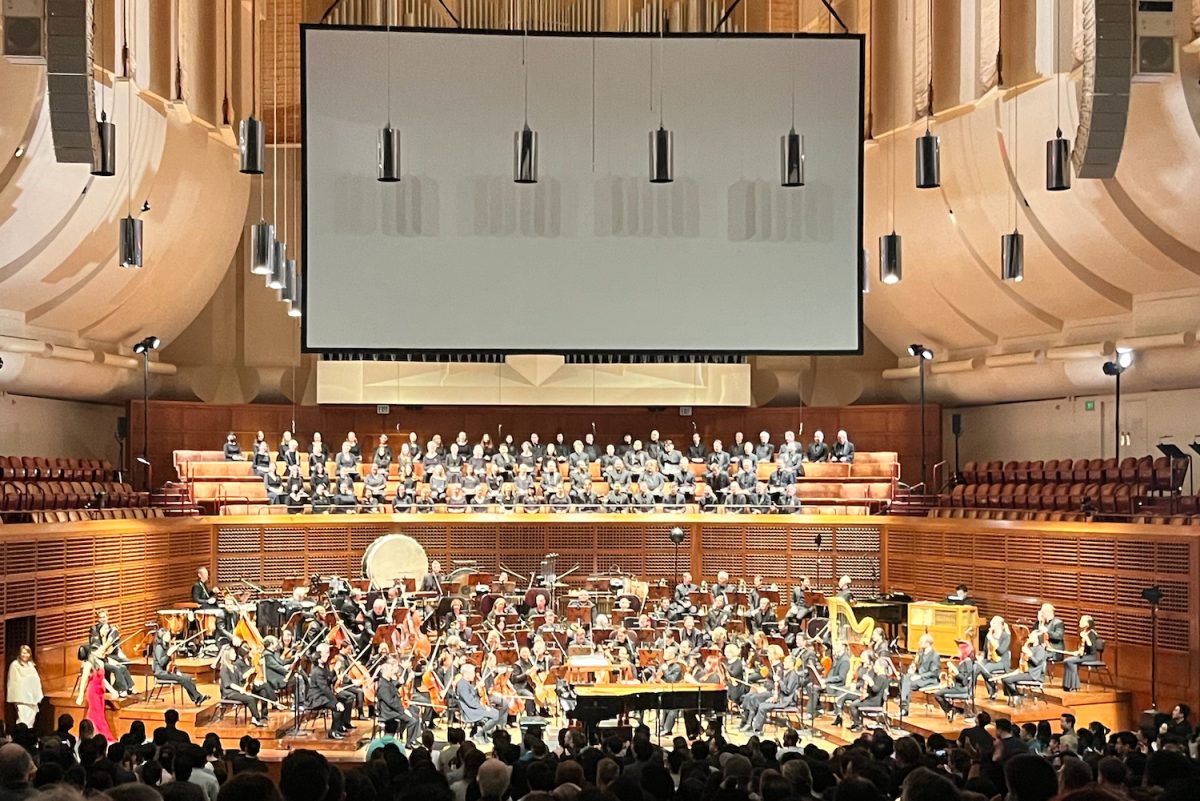The San Francisco Symphony Choir (SFSC) remains on strike with little change in sight, impacting the future of the performing arts world in San Francisco.
On Sept. 19 of this year, the San Francisco Symphony’s season opener, “Verdi’s Requiem,” was canceled due to disagreements between the choir and the symphony board. These disagreements are still active, with supporters waiting for a concrete conclusion.
SFSC is one of the most distinguished choirs in America and is led by chorus director Jenny Wong. The choir is composed of two groups. One is a group of paid members of a guild called the American Guild of Musical Artists (AGMA), with 32 of the 162 members of SFSC.
“The rest of the singers are made up of volunteers, so they’re not paid, and they do it willingly because it’s a pretty amazing experience to sing with the symphony,” said Kent Jue, the artistic and executive director of Ragazzi, a Grammy award-winning choir who has auditioned and sang on multiple occasions with SFSC.
Additionally, to be a volunteer, one has to audition every two years. It is a rigorous process requiring a lot of commitment due to regular rehearsals at certain selective times and programs.
These requirements and conditions were vital in determining the use of a strike. The initial proposal from the symphony was an 80% cut on the money, later changed to 65%. While 32 of the members are paid, it is not enough to make a living. As a result, most of them have jobs outside of the symphony, which they have to juggle with their rehearsals and performances. This amount of money, however, is just over 1% of the symphony’s total budget, as reported by Diana Pray at a conference at the San Francisco Arts Commission (SFAC).
“So, what does that mean? It’s as though they’re saying that the beloved chorus, the Emmy and Multi-Grammy Award-winning chorus, is not much to lose,” Pray said.
While it is a small part of the symphony’s budget, this 1% funds a great deal on the musical community in San Francisco.
“These pillar institutions provide a steady income for the paid singers, which allows them to live here and do a lot of other gig work that enriches the city’s culture,” Ryan Peterson said at the SFAC conference. “Most of the other choirs I sing with are staffed majority, I would say, by the AGMA singers of the symphony chorus. They simply could not exist without the symphony chorus and its steady income.”
The income from the symphony allows people to stay in San Francisco without moving elsewhere with other opportunities like New York, and changing it would change a great deal of the community living in San Francisco.
Even now, much is being done, but with no clear results. In the conference, it was mentioned that certain compromises were proposed by AGMA, including lower-than-proposed pay cuts and a return to standard rates guaranteed, as well as their current contract to be ratified, but these are to no avail after already struggling with the frozen wages.
According to Jue, many public voices have also come together. On Sept. 19, choir members and others who wanted to watch “Verdi’s Requiem” came together to protest in front of Davies Symphony Hall. They held signs saying, “Save the Chorus,” and passed out pamphlets in front of the symphony to share their story. However, the Board of Executives remained without response. They did, however, send letters to those who purchased tickets, allowing them to either request a refund or donate the tickets.
“I personally was disappointed because I really wanted to hear the ‘Verdi’s Requiem,’ which is such a stunning piece,” said Joye Kelci*, a former musical director and longtime supporter of the symphony.
The cancellation of “Verdi’s Requiem” was also a disappointment for those who were planning to participate in the orchestra.
Brad Hogarth is the Peninsula Youth Orchestra’s musical director, occasionally called in to conduct for the San Francisco Symphony. He was called in for “Verdi’s Requiem” as an additional trumpet set to play backstage during the performances.
“We went through our rehearsals, and then the choir went on strike just before the performance. I think the orchestra that week probably did 10 or 12 and a half hours of rehearsal before the first performance,” Hogarth said. “I hope that management can come to a place where they can offer the members of the symphony chorus a fair contract so that they can compensate them for their time and make it a much more workable living or work situation.”
Compromises and responses from the Board of Executives have been kept chiefly undisclosed to the public. However, they have stated that the concerts will resume. The next performance to include the choir is “Faure’s Requiem” on Nov. 15.
A similar strike involving the whole orchestra took place in 2000. It primarily involved salary disputes and lasted for about three weeks.
“The strike was settled the first day of our first rehearsal, and I have a very warm memory of someone striding into that rehearsal and saying to the orchestra something about unity and how we’re here to make music. It was just so healing,” Kelci said.
*This source’s name is changed to protect them from social consequences. For more information on Carlmont Media’s anonymous sourcing, visit Scot Scoop’s Anonymous Sourcing Policy.












